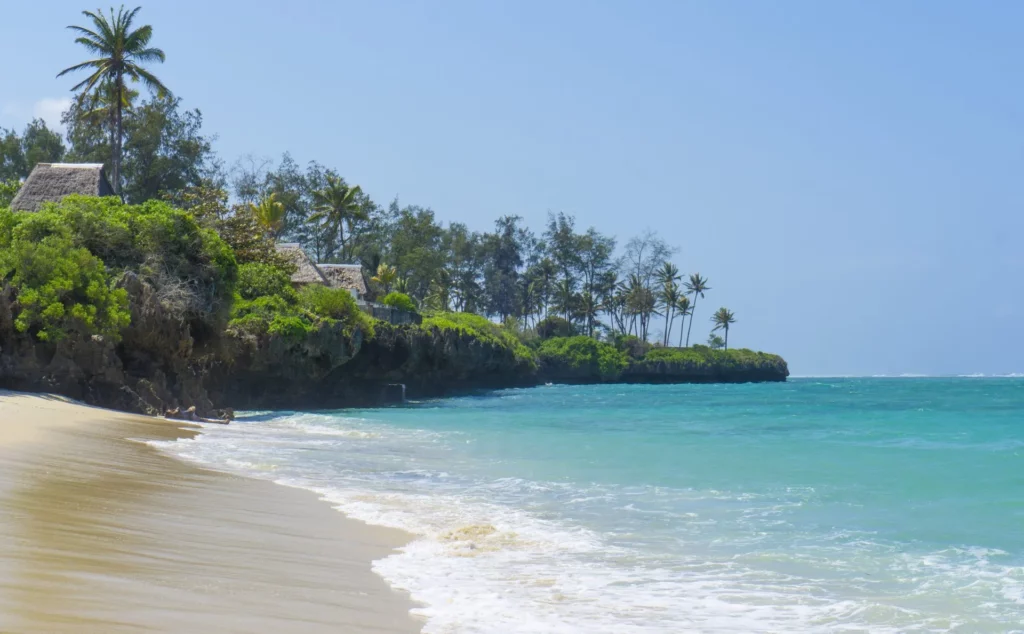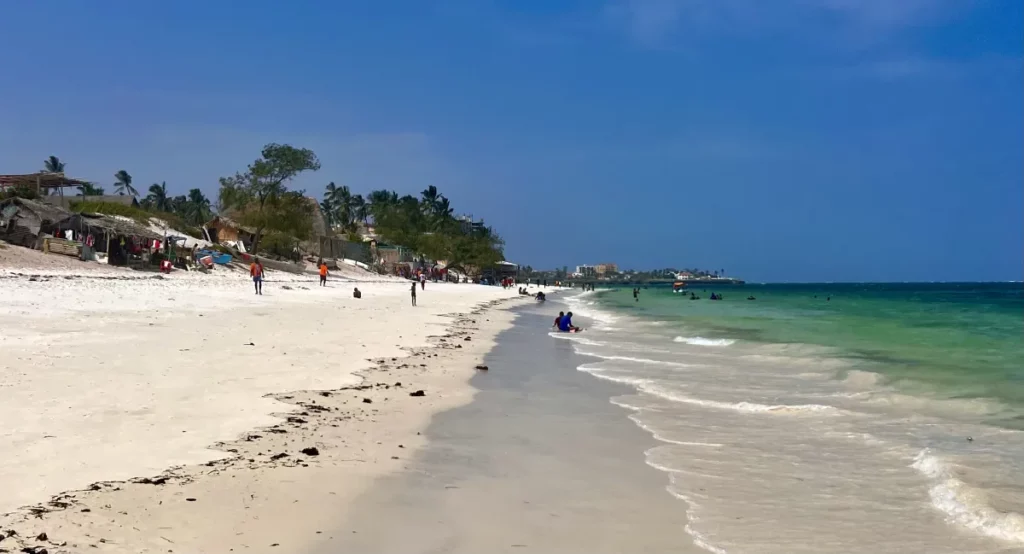Hidden Beach Gems Near Mombasa You’ve Never Heard Of
Travelers drawn to Kenya’s coastline often land in the familiar: Nyali, Bamburi, or Diani. These beaches are beautiful, no doubt—but they are also known, crowded, and increasingly commercial. For the seasoned traveler or local explorer who yearns for something quieter, more authentic, and far from the crowds, the coast still holds secrets. This post is your guide to the hidden beach gems near Mombasa that remain untouched, less developed, and steeped in raw coastal magic.
These aren’t just quiet beaches. They are hidden pockets of paradise, often known only to locals or the most adventurous of travelers. They offer solitude, scenery, and a glimpse into the coastal culture before tourism swept through. If you crave beaches without resorts, music, or motorboats—if you seek the undiscovered, the off-the-beaten-path, and the sincerely secret—this guide was written for you.
We begin in the south, just beyond the ferry, and trace a path through forgotten inlets, cliff-edged coves, and gold-dusted shores.
Tiwi Beach – A Hidden World Before Diani

Just 10 kilometers north of Diani lies Tiwi Beach, an unspoiled alternative to Kenya’s most famous southern beach destination. While Diani bursts with activity, Tiwi is its hidden twin—peaceful, authentic, and raw.
A Quiet Escape with Natural Pools
The appeal of Tiwi is in what it lacks: no beach clubs, no music, no sunbed-rental touts. Instead, you’ll find long stretches of white sand shaded by coconut palms and bordered by a wide coral reef. At low tide, hidden rock pools emerge, forming a mosaic of warm saltwater aquariums teeming with crabs, gobies, and sea urchins. These natural tidal pools are perfect for relaxed snorkeling or just soaking with the reef at your feet.
Self-Catering Serenity
Tiwi doesn’t cater to the package tourist. Here, it’s self-catering cottages, private beachfront homes, and a few locally run guesthouses. If you bring your own food and gear, you can stay for days without seeing another visitor. It’s a true hidden beach gem, perfect for travelers who want to disappear for a while.
How to get there: From Mombasa, take the Likoni Ferry and follow the road south. Just before Ukunda, turn toward Tiwi Beach via a rough coral track. 4WD is helpful but not essential in the dry season.
Gazi Beach – Mangroves, Dolphins, and Seclusion
South of Diani, just past Msambweni, lies Gazi Beach, a hidden shoreline tucked behind one of Kenya’s most successful community conservation projects. Most people visit Gazi for the mangrove boardwalk—fewer make it to the quiet beach that lies beyond.
The Gazi Women’s Mangrove Project
This remarkable initiative, run entirely by local women, maintains a raised boardwalk through Gazi Bay’s vast mangrove forest. Along the way, visitors learn about climate mitigation, local ecosystems, and traditional medicine. It’s not just eco-tourism—it’s local empowerment in action.
A Beach Worth the Detour
Once you pass the mangroves, a sweeping hidden beach opens before you. No hotels. No hawkers. Just mangroves to one side, gentle surf to the other, and a silence interrupted only by seabirds and wind. This off-the-beaten-path shoreline is ideal for long walks, shell collecting, and spotting dolphins offshore—particularly in the early morning. While Gazi’s dolphin activity isn’t as famous as that of Kizimkazi in Zanzibar, local fishermen and guides often report regular sightings, making it a rewarding and far less crowded alternative for marine wildlife enthusiasts.
Pro tip: Pack food and drinks; there are no services on the beach. Local guides are available for creek walks and dolphin tracking.
How to get there: Continue south past Ukunda, then turn off at Gazi town. Follow the road past the boardwalk entrance to the beach area.
Kijangwani Beach – A Secret Lagoon on the South Coast
Hidden between Waa and Shelly Beach is a crescent of sand few travelers ever find. Kijangwani Beach is a shallow, reef-protected inlet known mainly to locals—and barely marked on any map.
Calm Waters and a Cliffside View
Unlike the open surf of most southern beaches, Kijangwani is tucked within a protective reef that creates lagoon-like conditions. During low tide, the water retreats gently to reveal warm rock pools and rippling sandbars. Framed by cliffs and dotted with canoes, this hidden beach is a photographer’s dream.
No Development, Just Nature
There are no hotels or restaurants here. Instead, you’ll find fishermen preparing their nets, families collecting shellfish, and a few children splashing in the calm surf. It’s a quiet beach where you can spend an entire day with little more than a towel and some sunscreen.
How to get there: Head south past Likoni and turn off the main road near Waa. You may need to ask locals for directions—Kijangwani isn’t signposted.
Kanamai – Where Coastal Kenya Feels Undiscovered
Just a short drive north of Mombasa lies Kanamai, a stretch of beach that remains strikingly hidden despite its proximity to the city. Sandwiched between the better-known Shanzu and Kikambala areas, Kanamai is a place of windswept sands, local fishing boats, and raw, unfiltered atmosphere. It’s not completely untouched—but it still feels unknown.
A Beach Defined by Everyday Life
Kanamai’s charm comes from its quiet continuity. Here, fishermen paddle out before sunrise, children play barefoot in the sand, and herders sometimes guide goats along the dunes. Life here isn’t staged for visitors—it simply continues. And that’s what makes this hidden spot so compelling. It’s real.
Sand, Wind, and Endless Space
The beach stretches for miles, often with no one in sight. During low tide, the water recedes dramatically, leaving behind shallow pools and sculpted patterns in the sand. There are no beach beds, no bars, and no noise. Just space—space to think, to breathe, to walk.
While not the most scenic of Kenya’s shores in the traditional sense, Kanamai is a hidden gem for those who love wide-open coastal space and the raw textures of local life.
How to get there: Drive north from Mombasa past Shanzu. Turn off the main highway at Kanamai and head toward the ocean. Access roads are rough in some parts, but accessible by regular car during dry weather.
Takaungu – Rugged, Wild, and Completely Undiscovered

Takaungu is not a resort town. It’s a former Swahili settlement on the north coast, a short drive from Kilifi, and home to one of the most dramatic, hidden beaches in Kenya. Here, cliffs drop into the ocean, rock pools fill with tidewater, and the wind moves like a voice through the baobab trees.
A Beach with Raw Coastal Power
The beach at Takaungu is not built for sunbathing. It’s jagged, carved by waves, and wild in every sense. But it’s also beautiful—one of the few places where the Kenyan coast feels more like a personal revelation than a travel destination.
History and Solitude
The town itself is small and traditional. Coral-stone homes and mosques hint at centuries of Swahili culture. There are no resorts or restaurants. Visitors must bring everything they need—and take it all back.
Takaungu’s hidden beach is for travelers who find beauty in erosion, in the age of a stone wall, in the smell of seaweed and salt.
How to get there: From Mombasa, drive north toward Kilifi. Just before the bridge, take the Takaungu turn-off and follow the dirt road. It’s rough, but passable with a saloon car in dry weather.
Mnarani – Swahili Ruins Overlooking a Secret Creek

Just across the Kilifi Bridge, Mnarani is one of the few places on the coast where centuries of history and untouched coastline meet in silence. Most visitors stop at the ruins and never realize a hidden gem lies just below.
Ancient Architecture and a Quiet Shore
The Mnarani Ruins date back to the 14th century and include a coral-stone mosque and several Swahili tombs. Standing above Kilifi Creek, the site offers panoramic views of mangroves and still water. Few travelers know that a narrow trail behind the ruins leads down to a secluded, quiet shoreline—a rare blend of history and solitude.
A Spot for Kayaking and Paddleboarding
The calm waters of the creek are perfect for paddling. A handful of boutique lodges nearby rent out kayaks and SUP boards, and in the early mornings, the inlet becomes a mirror of sky and green. You can paddle past fishermen casting nets or drift into narrow mangrove tunnels where birds nest in silence.
How to get there: Cross Kilifi Bridge heading north, then loop down into Mnarani village. Park near the ruins and ask a local for directions down the cliff trail.
Mambrui – Where the Dunes Meet the Sea

North of Malindi lies one of Kenya’s most cinematic coastal locations—Mambrui. Golden dunes, a timeless Swahili village, and a vast stretch of surf-pounded sand come together in a location so undiscovered, it still feels like a frontier.
The Beach That Shimmers Like the Sahara
Mambrui’s defining feature is its golden sand, which drifts into smooth dunes inland. This is one of the only places on Kenya’s coast where the shoreline resembles a desert—burnished, windswept, and expansive. It’s not just a place to relax. It’s a place to be awed.
A Swahili Town Lost in Time

Mambrui’s history stretches back to the 11th century. Archaeological digs have uncovered Chinese porcelain shards and ancient Islamic architecture, pointing to trade routes that reached deep into Asia. Today, the village is a quiet maze of coral-stone homes and narrow alleys where life continues as it has for centuries.
There are no big hotels here—just a few modest guesthouses and eco-lodges with sand paths leading straight to the water. It’s the definition of an off-the-beaten-path destination.
How to get there: About 15 km north of Malindi. Follow the tarmac road until it becomes dirt, then head through Mambrui village to the coast. A 4WD is recommended during the rainy season.
Kuruwitu – Where Community and Conservation Meet
Hidden near Vipingo, Kuruwitu is home to one of Kenya’s most successful grassroots conservation initiatives. What started as a local effort to stop reef degradation has become a model marine sanctuary—and a peaceful coastal escape in its own right.
A Living Reef Protected by the Community
In 2003, local elders in Kuruwitu banned fishing along a 30-hectare section of the reef. The result? Marine biodiversity has rebounded spectacularly. Today, snorkelers can spot vibrant corals, sea turtles, parrotfish, and more—just meters from the shore.
A Quiet Place With a Purpose
Kuruwitu doesn’t have the powder-soft sand of the southern coast, but it offers something else: a quiet, ethically protected coastline with clean water, a gentle reef, and shady coves for cooling off. There’s no music, no crowds—just rustling casuarinas and the splash of fish below.
Supporting Local Stewardship
For a small fee, you can join a reef walk or snorkeling tour led by community guides. Proceeds fund environmental education, cleanup efforts, and reef monitoring. Few places offer such a seamless blend of conservation and tourism.
How to get there: Drive north from Mombasa toward Vipingo Ridge. The turn-off to Kuruwitu is unmarked, so use Google Maps or local directions.
Ngomeni – A Port Forgotten by Time
Ngomeni, located north of Malindi, was once a major Swahili trading post. Today, it’s barely a dot on the map—but the remnants of mosques and coral-stone houses remain, hidden behind dunes and saltbrush. And just beyond lies one of Kenya’s most mysterious stretches of coastline.
Coastal Silence and Archaeological Echoes
There’s something ghostly about Ngomeni. The wind picks up in the afternoon and sweeps across wide open sand, whispering through half-buried ruins. The water here is rougher than in more popular areas, but the drama of the setting makes it one of the coast’s most memorable hidden locations.
Unfiltered and Unknown
There are no signs pointing the way. No tour buses. No restaurants. Just a rough road, a few crumbling buildings, and the endless sea. It’s not for everyone—but for those who find poetry in erosion and silence, Ngomeni is unforgettable.
How to get there: Best approached from Malindi via Marereni Road. The final stretch is rough, so a 4WD is helpful. This can be combined with a trip to the Sabaki River Delta nearby.
Why These Places Are Still Hidden
These secret gems haven’t been overrun because they’re not easy to find. Reaching them often means bad roads, no signage, and an absence of amenities. But that’s exactly why they remain intact. They’ve been spared by the absence of convenience—and as a result, they still feel sacred.
They’re quiet because they haven’t been monetized. They’re hidden because they haven’t been marketed. They’re off-the-beaten-path because they haven’t been paved over with brochures.
For the traveler who’s seen Diani and snorkeled Nyali, these places offer the chance to fall in love with the Kenyan coast all over again.
How to Explore these Hidden Beaches Responsibly
With great discovery comes great responsibility. These hidden beaches near Mombasa are beautiful precisely because they haven’t been overrun. If you’re fortunate enough to experience them, here’s how to make sure you don’t leave a footprint that changes them forever.
Leave Nothing Behind
Many of these beaches don’t have trash bins—or anyone to clean them. That means what you leave behind stays behind. Always carry out your garbage, including food scraps, plastic bottles, and sunscreen packaging. Better yet, bring reusable containers and reef-safe sunblock.
Respect Local Communities
Most of these off-the-beaten-path locations are part of or adjacent to traditional villages. These are not private resorts—they are people’s homes. Dress modestly when walking through inhabited areas, greet people respectfully, and ask before taking photographs.
If you buy something—whether it’s a snack from a kiosk or a guided walk—you support the local economy and encourage communities to preserve their natural surroundings.
Don’t Geotag or Over-share
It might seem harmless to post that perfect shot with a geotag—but doing so can turn a secret beach into a social media hotspot overnight. If you must share, consider skipping exact location tags or use vague captions. Let others find it through exploration, not algorithms.
Avoid Overloading Fragile Ecosystems
Mangroves, coral reefs, and tidal pools are delicate systems. Don’t trample corals while snorkeling. Stay on trails where they exist. Resist the urge to collect shells or touch marine life. It’s a hidden world, and it thrives best when left intact.
Mombasa’s Hidden Coast Still Exists—For Now
In a world where most travel feels curated and every destination has been reviewed to death, the Kenyan coast still offers a few secrets. These hidden beach gems near Mombasa don’t appear on top 10 lists or influencer reels. They aren’t polished, predictable, or ready-made for selfies. They are wild. They are quiet. They are real.
From the desert dunes of Mambrui to the mangrove-fringed shallows of Gazi, each location on this list offers more than just beauty—it offers connection. To place. To people. To a different way of experiencing the coast.
So, if you’ve already walked Nyali’s promenade and danced in Diani, maybe it’s time to go further. To drive down that unmarked road. To follow the path that disappears behind the baobabs. To find your own hidden beach, and to let it change the way you see this coast forever.
Because sometimes, the best parts of the world are the ones still waiting to be discovered.


